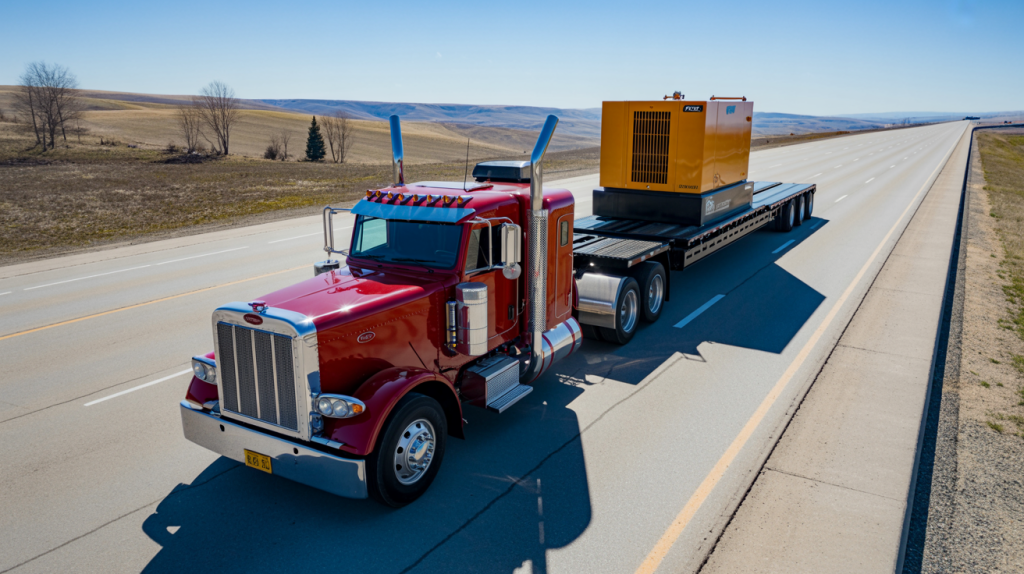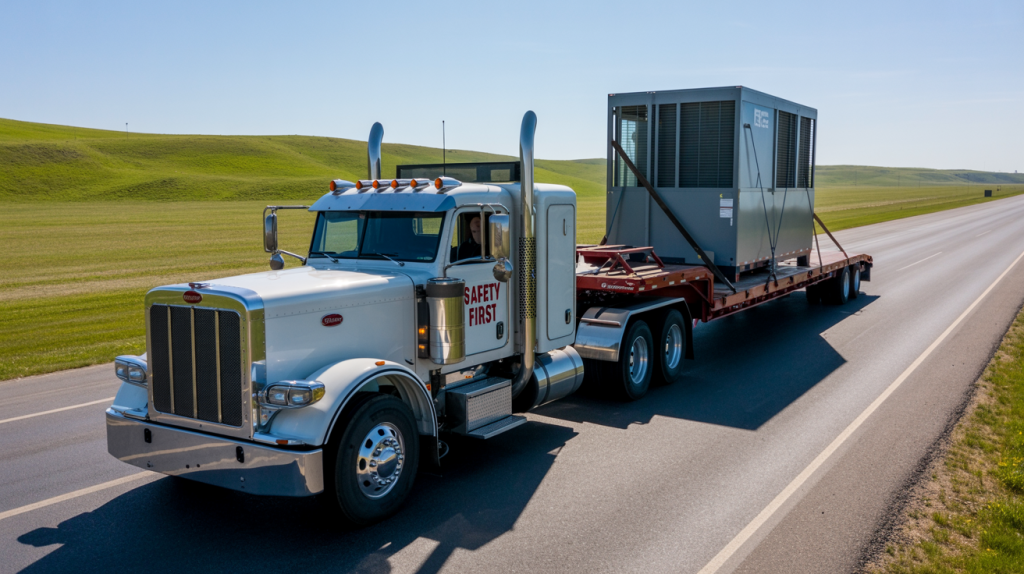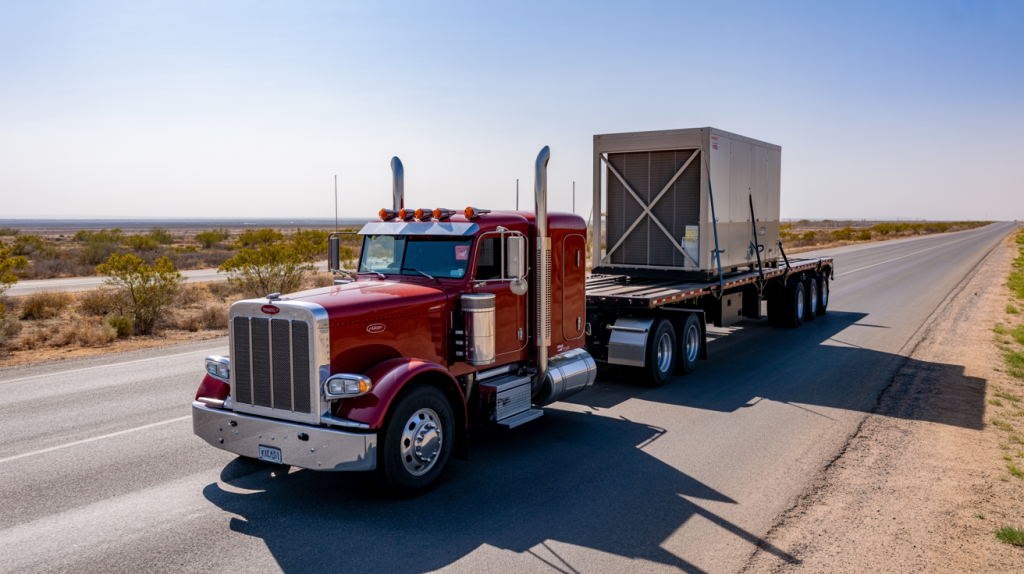How We Manage Heavy Haul Challenges in New Mexico
Freedom Heavy Haul can offer expedited Pickup and Delivery for any size shipment anywhere in the USA. Contact us today for No Hassle, No Pressure Pricing.
We at Freedom Heavy Haul successfully move oversize or overweight cargo across New Mexico by combining precise logistics, specialized equipment, and proactive planning.
In this article, you will learn about How We Manage Heavy Haul Challenges in New Mexico.
Geographic Obstacles and Route Planning
In this section, we outline how terrain and elevation impact our route selection and equipment choice.
Terrain Complexities
We at Freedom Heavy Haul assess steep grades and tight turns in the Sangre de Cristo and Sacramento Mountains and select trailers—such as multi-axle lowboys or steerable configurations—that suit those conditions.

Elevation Effects
We anticipate reduced engine performance and altered braking behavior at high altitude. By planning routes with elevation profiles and staging areas, we avoid engine overheating and brake fade.
Our Approach
- Map each route against elevation and road width data
- Stage loads where there is ample room for maneuvering
- Verify turning radii and roadway clearances before departure
Weather Hazards and Seasonal Timing
This section explains how we monitor and adapt to New Mexico’s extreme weather patterns.
Heat Stress
We avoid midday departures during summer heat to prevent tire failure and cooling-system overload.
Winter Risks and Monsoons
We at Freedom Heavy Haul monitor forecasts for ice, snow, and flash floods. If severe conditions are predicted, schedules are adjusted or alternate routes are chosen.
Our Approach
- Use real-time weather feeds to make go/no-go decisions
- Build flexibility into schedules for unexpected delays
- Maintain contingency plans for rerouting around flooded or icy roads
Infrastructure Limits and Bridge Clearances
Here, we describe how we verify road and bridge capacities before hauling.

Road Width Restrictions
We check NMDOT and county road data to identify routes that can accommodate our load dimensions.
Bridge Rating Considerations
We consult load-rating databases and perform engineering assessments for superloads to ensure structural safety.
Our Approach
- Pre-inspect critical bridges and overpasses
- Identify alternate corridors with stronger pavement and higher clearances
- File route plans with authorities in advance to secure approvals
Permitting and Legal Compliance
In this section, we cover our process for securing all necessary state permits on time.
Permit Types and Timelines
We at Freedom Heavy Haul handle all oversize, overweight, and superload permit applications through NMDOT at least two weeks before the haul.
Engineering Reviews for Superloads
For loads over 200,000 lbs, we coordinate multi-agency reviews and address any engineering requirements early.
Our Approach
- Submit permit paperwork well in advance
- Track approval status daily and correct any issues immediately
- Use our online permit-filing system to streamline communications
Escort Vehicles and Traffic Coordination
This section details how we ensure safe passage through populated or constrained areas.
Pilot Car Requirements
We contract certified pilot vehicles equipped with warning lights and two-way radios to guide loads through populated or narrow areas.
Law Enforcement Liaison
We coordinate with state police when routes demand additional traffic control or road closures.
Our Approach
- Determine the number of pilot cars based on cargo dimensions
- Establish constant radio contact between pilot cars and the lead truck
- Conduct pre-trip meetings to review escort procedures
Equipment Securement and Trailer Selection
Here, we explain our methodology for choosing trailers and securing loads.

Trailer Types
We at Freedom Heavy Haul choose drop-deck, extendable, or modular multi-axle trailers to distribute weight evenly and match cargo dimensions.
Securement Protocols
Straps, chains, and binders follow DOT-compliant standards, and inspections occur at load-in, mid-route, and load-out.
Our Approach
- Match each load to the ideal trailer configuration
- Inspect every securement point at each stop
- Keep detailed checklists in each truck’s log
Tribal and Federal Land Permissions
This section covers the additional permissions required for tribal and federal lands.
Jurisdictional Approvals
We secure separate access permits for Navajo Nation, Pueblo lands, and BLM-managed roads before scheduling any haul.
Agency Coordination
We maintain regular communication with tribal and federal agencies to ensure all permissions remain valid.
Our Approach
- Submit tribal and federal permit applications concurrently with state permits
- Carry all approvals on board in both digital and paper formats
- Confirm access procedures with on-site tribal liaisons
Skilled Drivers and Operator Readiness
Here, we discuss how driver expertise and training contribute to safe hauls.
Experience Requirements
We only assign drivers who hold heavy-haul endorsements and have proven experience on New Mexico’s challenging highways.
Ongoing Training
Refresher courses cover mountain driving, emergency braking on slopes, and adverse-weather handling.
Our Approach
- Vet driver qualifications and past trip records
- Conduct regular simulator and hands-on training sessions
- Evaluate driver performance after each specialized haul
Proactive Planning and Contingencies
In this final section, we outline our end-to-end planning and real-time monitoring strategies.
Load Mapping and Staging
Routes are plotted mile by mile, including staging areas, fuel stops, and emergency pull-outs.
Real-Time Tracking and Communication
GPS dashboards and automated alerts keep clients informed of progress and any deviations.
Our Approach
- Prepare contingency routes for road closures or washouts
- Issue automated status updates to stakeholders
- Review each haul afterward to improve future planning
FAQs about Heavy Haul Challenges in New Mexico
How far ahead do we apply for NMDOT permits?
We submit all permit applications at least two weeks before the planned haul to allow time for reviews and any necessary revisions.
When are escort vehicles required?
Escort requirements depend on the cargo’s width, height, and the specific route. We determine this during our initial route survey and arrange the appropriate number of certified pilot cars.
What steps do we take for tribal land crossings?
We secure access approvals from tribal governments concurrently with state permits, carry all documentation in both digital and paper formats, and confirm local procedures with on-site tribal liaisons.
How do we minimize weather-related disruptions?
We monitor forecasts in real time, build flexibility into our schedules, and activate pre-planned contingency routes when risks of floods, ice, or extreme heat arise.
What ensures our cargo remains secure throughout the journey?
We match each load to the ideal trailer configuration, follow DOT-compliant securement protocols, and conduct inspections at load-in, mid-route stops, and load-out.







